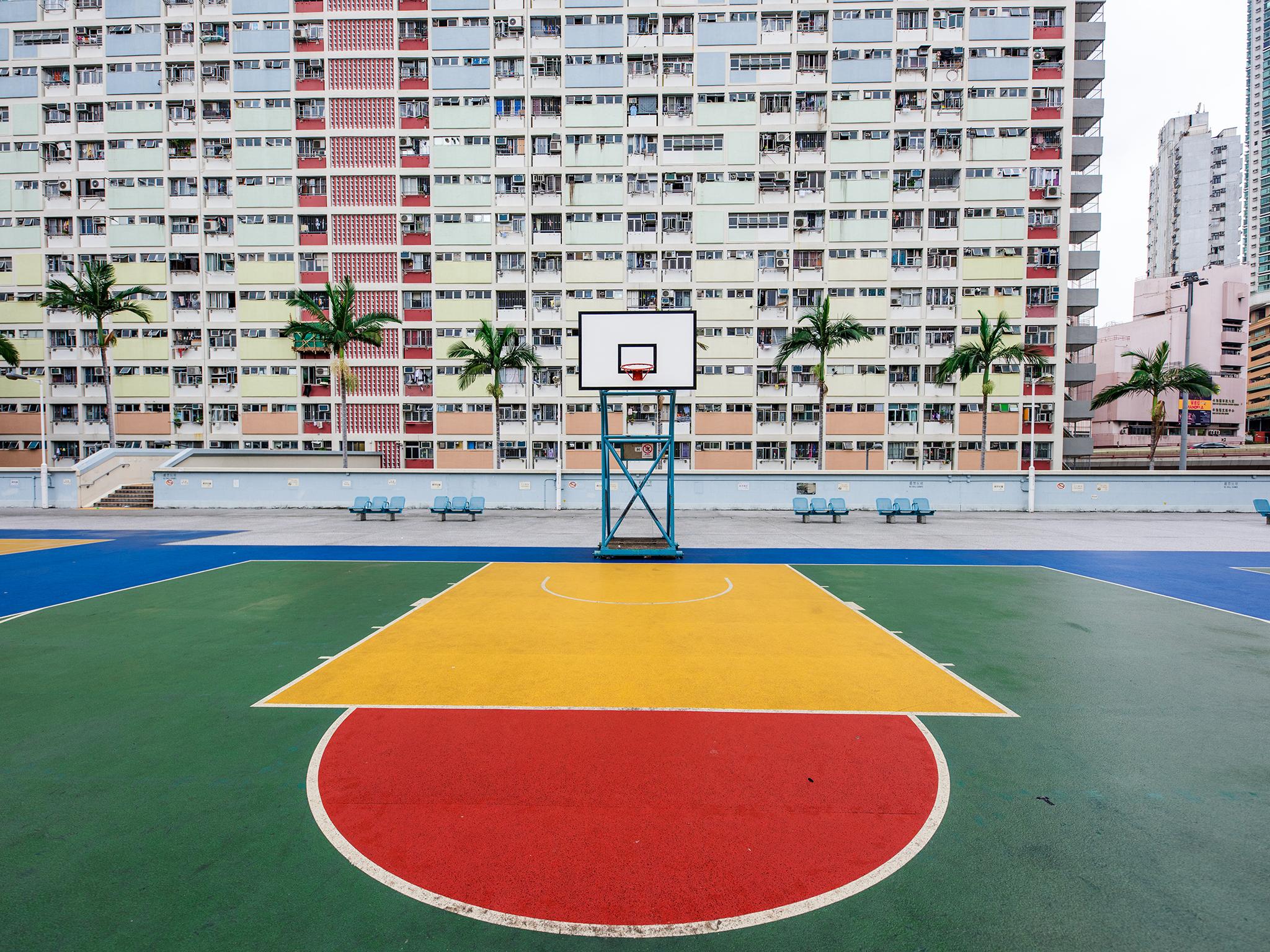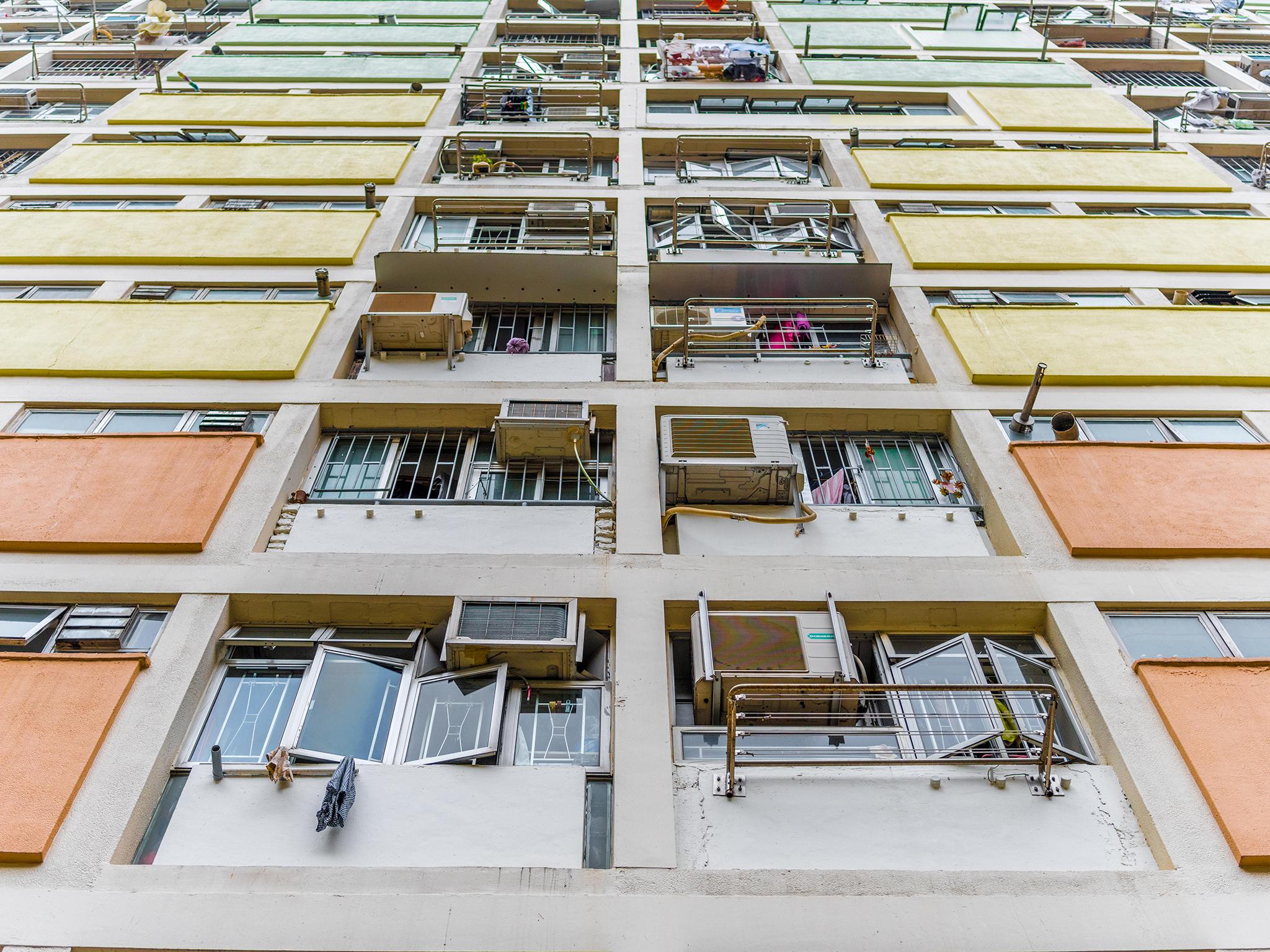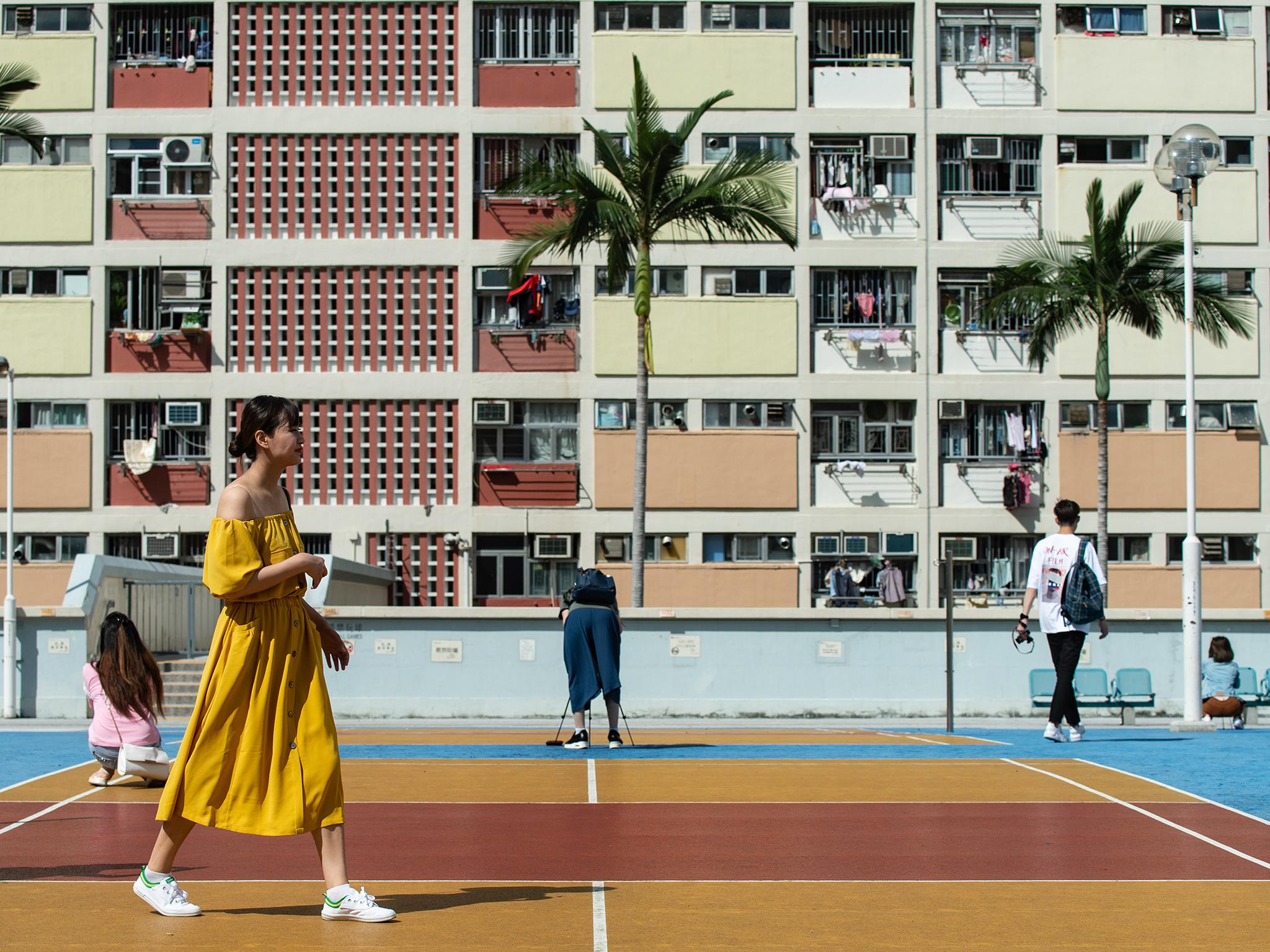Your support helps us to tell the story
From reproductive rights to climate change to Big Tech, The Independent is on the ground when the story is developing. Whether it's investigating the financials of Elon Musk's pro-Trump PAC or producing our latest documentary, 'The A Word', which shines a light on the American women fighting for reproductive rights, we know how important it is to parse out the facts from the messaging.
At such a critical moment in US history, we need reporters on the ground. Your donation allows us to keep sending journalists to speak to both sides of the story.
The Independent is trusted by Americans across the entire political spectrum. And unlike many other quality news outlets, we choose not to lock Americans out of our reporting and analysis with paywalls. We believe quality journalism should be available to everyone, paid for by those who can afford it.
Your support makes all the difference.The basketball courts at Choi Hung Estate, a public housing complex in Hong Kong, would seem the perfect place to play. Brightly painted in blue, orange, yellow and red, they are on the sunny roof of a two-storey parking garage, and surrounded on three sides by equally colourful highrise apartment buildings.
But it can be hard to get a game going with all the people standing, sitting and lying down for pictures.
Across Hong Kong, where almost half the population lives in government-provided housing, public housing complexes have become wildly popular Instagram destinations. Locals and tourists have flocked to estates around the city, craning their necks to get that perfect social media shot and irritating residents in the process.
The estates have drawn professional interest as well, featuring prominently in marketing campaigns and even a music video by Korean boy band Seventeen.
It is easy to see why places like Choi Hung, which means “rainbow” in Cantonese, are so Instagram friendly. Other estates make for equally pleasing photographs: one is made up of bright blue structures with mesmerising concentric circles, another of cylindrical buildings with interiors that resemble giant slinkies.
“It’s visual art. It attracts people’s attention,” says William Leung, 38, a self-proclaimed “public housing fanatic” and an avid photographer who recently published a photo book about Hong Kong’s estates.
As with so much architecture, good looks go a long way. But what many of the tourists toting selfie sticks do not realise is that the estates are miracles of public housing, creating affordable homes for millions of people in one of the world’s most expensive cities.
“When you see Choi Hung Estate becoming popular on Instagram, it’s purely based on aesthetics,” says Christopher DeWolf, a journalist who writes about urbanism and architecture, and author of Borrowed Spaces: Life Between the Cracks in Modern Hong Kong.
“A lot of Hong Kong’s public housing estates were built at a time when modernism was an ascendant form of architecture,” says DeWolf, 33. He says their clean lines and symmetry make them “very striking” as photographic backdrops.

The estates also provide a different view of Hong Kong, which is more often photographed for its iconic skyline.
“Posing in front of public housing complexes where so many people live creates the sense that they’re in the middle of the world,” says Cyrus Wong, an architectural assistant who researched the popularity of public housing on Instagram as part of his master’s thesis.
Sometimes, those selfie-takers have even posed in the middle of a basketball game.
Vincent Yeung, 23, has lived at Choi Hung Estate almost his entire life. On a recent Saturday afternoon, he was the lone basketball player on courts that were otherwise packed with photographers.
“There are too many people taking photos here,” he says. “My friends have gone elsewhere to play.”
A few months ago, he was playing a game of 3-on-3 when a couple decided to sit in the middle of the court for photos. A stray ball inevitably hit them, Yeung says, and the couple exploded in anger, cursing at him and his friends.
“If we scold them, we’re accused of discrimination,” he says of the mainland tourists who are among the visitors to the estate. “But if we don’t scold them – well, we’re playing basketball here! It’s really a dilemma.”
There are no explicit rules against photography at the estates, but passcodes are required to enter the buildings themselves.
Public housing has played an important role in Hong Kong’s history, with government policy often reflecting the city’s economic development.
Hong Kong saw a huge influx of refugees from roughly 1937 to 1950, which was spurred by the Japanese invasion of China in the lead-up to the Second World War and continued through China’s civil war. The city struggled to accommodate the newcomers, and hundreds of thousands ended up living in sprawling, overcrowded shanty towns packed with squatter huts.

When a fire ripped through a squatter area on Christmas Day in 1953, displacing 53,000 people overnight, the government was forced to intervene. Temporary shelters and short term resettlement centres were eventually replaced by permanent housing estates. One of the first was Choi Hung, built in 1964 to house some 43,000 people.
In the decades since, the Hong Kong government has aggressively pursued a policy of housing its citizens. Today, 30 per cent of the population lives in public rental housing, while 16 per cent lives in apartments purchased with the help of government subsidies. The city “has a massive public sector housing programme on a scale that is unprecedented in free market economies,” according to a report on housing policy by Our Hong Kong Foundation, a research organisation. “It is undeniable that the government of Hong Kong is the single largest landlord, developer and operator of housing within the territory.”
Despite this, the city faces a severe housing crisis, and demand for public housing far outstrips supply. Families are now waiting more than five years for apartments, which in turn has pushed prices in the private market to astronomical highs.
Older housing estates like Choi Hung remind people of a more affordable era, DeWolf says. Many of them were built in the 1960s, when the city transformed itself into a booming manufacturing hub, and 1970s, when the economy took off.
“In hindsight, there’s this optimism,” DeWolf says, “a yearning for a time that maybe seemed more simple, when it seemed like everyone in Hong Kong had a shot at success.”
Nelson Yuen, 25, a lifelong resident of Choi Hung, has seen the camera-toting crowds descend on his backyard. Far from being annoyed, he decided to set up a photo stand with his girlfriend, selling Polaroid shots for 40 Hong Kong dollars, or about £4 each.
“I think it’s pretty good, to make this place a tourist spot,” he says. “It’s better than not having people here.”
© New York Times

Join our commenting forum
Join thought-provoking conversations, follow other Independent readers and see their replies
Comments